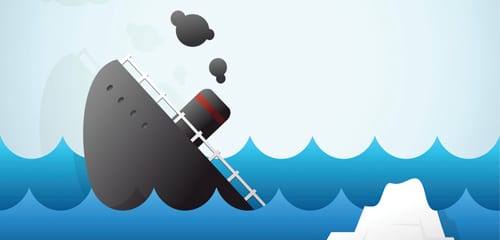
by Martin Bellin, Founder and CEO, BELLIN GmbH
It was the middle of the night and as RMS Titanic floated through the North Atlantic, ladies and gentlemen, elegantly dressed, sat in the lounge drinking champagne without a care in the world. The iceberg didn’t come as a complete surprise; the captain knew they were in dangerous waters, the crew was watching for ice, but everyone thought that the ship could take it. Yet when the iceberg hit, the ship was torn apart, and the glitz and jewels of that night, April 14 1912, sank to the bottom of the sea.
It can be tempting to see our corporate enterprises as the White Star Line of Boston Packets saw RMS Titanic: masterfully structured, intricately protected (be it by financial instruments or inch-thick steel), big enough to survive even the largest problems that might come its way. Yet when struck by the iceberg of frozen liquidity, a corporation too can sink, and the 2008 recession brought the chill of that iceberg to the decks of many a company. But while Captain Smith relied on reports from the lookout, with little information about structure of the ship, we can use centralised treasury information, technology and processes to fully understand our liquidity today and tomorrow – and avoid disaster.
Dangerous waters
You shouldn’t need to be warned that we are currently in dangerous waters, and indeed we have been for the last 30 years or so. Globally, we’ve been through one crisis after another: the Latin American debt crisis of the 80s which resulted in such a liquidity crunch that entire nations (Brazil and Mexico) ended up defaulting; the ‘87 ‘Black Monday’ stock market crash which dropped the Dow Jones by 22.61%; the Japanese asset price bubble from 1986-1991, which saw stock prices plummeting to half of what they were at its peak; the US savings and loan crisis; then the dot com collapse. Not to mention numerous national/regional crises.
Sign up for free to read the full article
Register Login with LinkedInAlready have an account?
Login
Download our Free Treasury App for mobile and tablet to read articles – no log in required.
Download Version Download Version






























